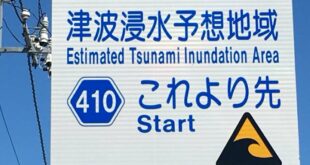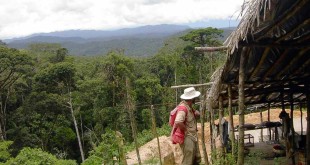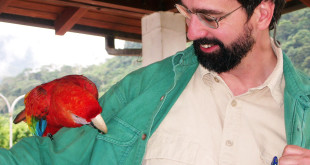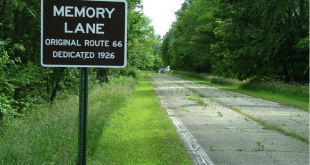Well it’s December 23rd and we’ve shut the books on 2001. We’d like to take the opportunity to thank all of our readers for support and encouragement over the last few months. “Straight Talk” is now read in 23 different countries. Next year we’ll be bigger and better.
All the best of the season to you! Take time for friends and family this holiday – your investments may be silver and gold, but the special people in your life are more precious than diamonds.
For your holiday reading I have a treat: “The Great Diamond Fraud of 1872.” This is something I researched and wrote back in 1993, a few weeks before the Bre-X story broke. To put the Diamond Fraud in historical context: in 1872 the Mining Barons of the West were the Bill Gates of the time. Everyone knew through stories of the California Gold Rush and the Comstock Lode, that fantastic mineral wealth lay in the west – there for the taking by men of courage and enterprise (and a little luck). On top of this, fantastic stories were filtering out of Cape Province of the huge diamond discoveries around Kimberley. The news of the discoveries travelled a lot faster than hard geological detailed information – of which there was none. The pump was well and truly primed, and the American West was sufficiently remote and unknown that it served as an excellent backdrop for the scheme.
Some readers may find striking parallels with Bre-X, which just goes to show that human nature hasn’t changed much in 130 years! Some very astute investor once observed, “If something sounds too good to be true, it probably is.” It was great fun researching the story, and I’ve committed all the transcribed original newspaper articles from 1871-1873 to computer file should anyone be interested in them.
A Merry Christmas and a Happy (and very Prosperous) New Year to all.
The Great Diamond Fraud of 1872
Part 1
The following is compiled from contemporary accounts in the Engineering and Mining Journal, and the San Francisco Daily Evening Bulletin.
It was 1870. The Civil War was over, and from all over the American West, rumours of tremendous mineral wealth in the newly opening up expanse made their way to the frontier cities of St. Louis and San Francisco. Hordes of prospectors set out from there for the interior to try their luck. Three of them decided not to trust to luck…..
Philip Arnold, along with confederates Edward Slack and J.B. Cooper were three experienced prospectors who had cut their teeth in the ’49 California Gold Rush. In the summer of 1870, the three set out to prospect around the Burri Burri gold mine in New Mexico near the Arizona state line. Colours proved scanty, but one day fortune seemed to smile on them; in the course of their panning they found a large number of blood redcoloured stones which they took to be rubies. Quickly, they dashed back to San Francisco with a small sack of stones and triumphantly presented the “gems” to a jeweller for valuation. The jeweller pronounced them to be garnets and therefore worthless, and asked where they had come from. He added that if they were to find diamonds, well, that would really be something! Diamonds had been discovered only three short years earlier in South Africa, where a full scale rush was on. Considerably deflated, the three probably repaired to the nearest saloon to console themselves, and there hit upon a new scheme. If a diamond mine was what the world wanted that’s what it would get! Cooper, who had worked for a diamond drill manufacturing company pointing drills, volunteered to get some stones, and so the plan was hatched. They visited a second jeweller with a small number of diamonds mixed in with their garnets, and marched out with a certificate of authenticity in their hands.
Their first victim, was the financier J.R. Roberts, whom Arnold met, as if casually on the street, hinting he was on to a “good thing”. Roberts was sufficiently convinced by the diamonds and proof of their authenticity to generously bankroll the three for a second trip to their “diamond fields”. Two months later Roberts, with a certain theatrical flourish pulled a cloth bag from the safe of his friend Harpending, undid the drawstring and poured some sixty pounds of precious stones on to his billiard table before the incredulous faces of his friends, William Lent and Gen. George Dodge. Harpending had already been sold on the play; Lent and Dodge now begged to be let in. Convinced by Arnold that large sums of money would be needed to stake the diamond fields and carry out prospecting work, the four eagerly sought out their rich friends and unwittingly drew them into Arnold’s web. After a short while, Slack feigned a quarrel with Arnold and offered to sell his quarter interest to the investors for $100,000 in gold. Lent advanced them the money using the bag of stones as security. After Slack was paid, the two agreed to return to the still secret location of the fields in the spring, some two months hence. With cash in hand, Arnold and Slack left town, ostensibly to the end of the rail line to await the spring thaw. Actually, they made their way to Halifax, and boarded the first steamer to Europe. The two then went on a fantastic diamond buying spree in Amsterdam and London to get the necessary props for their production. The first bag of stones they had displayed was made up of inferior rough culls bought the previous year with the grubstake money Roberts had provided. Arnold had rightly calculated that no jeweller in San Francisco was competent enough to value rough diamonds, and no one seems to have questioned Arnold when he said they were worth $650,000. Included in the batch was an impressive 103 carat monster for which Shreeve & Co. offered $96,000. The two now returned “from the field” in midsummer 1871 with a second impressive bag of stones. They however didn’t anticipate an appointment with the “great diamond expert”, Tiffany.
Part Two
Arnold and Slack told everyone that they had had bad luck, and had taken a new river route to reach the diamond fields and throw others off the scent. Their raft had been wrecked, spilling their mining tools into the water, and the stones which once again covered Harpending’s billiard table were the result of a mere 13 days work with one shovel.
The San Francisco investors were by now so convinced that they had a world class diamond mine on their hands that they decided to give some New York money men a chance. For their own credibility they arranged to have the latest bag of stones valued by Charles Tiffany, America’s premier jeweller. A common crook probably would have skipped town by now, but not so the uncommon poker-faced Arnold. If anything, it was Tiffany who was feeling intimidated by their meeting. Surrounded by the investors, who were among the richest men in America, and favorably influenced by offers of his own personal piece of the action, he put a value of $150,000 on the stones then and there. Arnold couldn’t have known that Tiffany was a silversmith by trade and had never done an apprenticeship in the diamond houses of Europe. Tiffany of course kept this fact a secret. It would be a loss of face to let one of Tiffany’s underlings – the true experts – value the stones.
It was hastily agreed that the investors should form a mining company and survey and secure the grounds immediately. Concerns that they couldn’t hold the claims in the Sioux Indian lands under current mining law, led them to allocate money “for purposes of securing the necessary legislation”. The 1872 US. Mining Bill was both tailored where necessary and passed into law before the next visit to the fields. It is not surprising that the lobbyists rewarded Gen. Ben Butler, a Congressman, and personal friend of President Grant, with 1,000 shares in the new company.
An offer was made to buy Arnold out for $1,000,000; part to be paid immediately, and the balance after a geologist of their choosing confirmed the value of the prospect. Arnold was furious and said that the offer was only a fraction of the value, that he could bring that much out in diamonds in a week with a dozen men, and that there was nothing to prevent the investors’ geologist from intentionally understating the value of the property in a false report and staking it for himself once he knew the discovery location. He demanded $100,000 cash before he signed anything. When the dust finally settled, Arnold and Slack agreed to take Mining Engineer Henry Janin to the fields in the spring of 1872.
Arnold and Slack hurried off to prepare the next part of their elaborate scheme. Since the whole play was phoney anyway, they decided to move the “diamond fields” from Arizona to a more accessible location. They hit upon a point by Vermillion Creek, Colorado, near the Utah-Wyoming-Colorado junction and north of the present day Dinosaur National Monument. The site was not too far from the railway, on top of an imposing flat-topped mesa. A more propitious spot for riches there never was. With great care the two salted the ground with a liberal quantity of rough stones, placing them in conspicuous cracks and crevices in the bedrock of the mesa and downslope in the gravels of the surrounding creeks. While in the area they met up with several cowboys to whom Arnold boasted he had, “the best thing in the world”, and that in the spring he “would get up a terrible excitement”.
By June 20th, everything was in place. The small party started for Cheyenne. Janin expressed surprise, since he had always believed the fields were in Arizona. Arnold reassured him that that was a deliberate ruse to confuse the competition. Janin’s report, published in the Engineering and Mining Journal, September 3, 1872, says they were on the ground a mere seven days, in which one and a half tons of gravel were washed, primarily by Arnold and Slack, the only experienced panners in the party. The washing yielded 1,648 carats of diamonds and 7,200 carats of rubies. He ended, “I do not doubt that further prospecting will result in finding diamonds over a greater area than is as yet proved to be diamond bearing; and that I consider any investment at the rate of $4,000,000 for the whole property a safe and attractive one”.
Part Three
After a brief reconnoitre of the diamond fields, Mining Engineer, Henry Janin busied himself with surveying the claims, erecting posts, and securing water and timber rights in the newly proclaimed Golconda Mining District. The panning was largely left to prospectors Arnold and Slack. This is just what they wanted, since it gave them the opportunity to liberally salt every pan.
Now wholly convinced by Janin’s $4,000,000 valuation of their play, it only remained for the backers to take the thing public. The San Francisco investors’ main concern now, (an enviable one) was that, “diamonds may be found in such an abundance as to destroy their value.”
The San Francisco and New York Mining and Commercial Company was duly incorporated with a capital of $10,000,000. At noon, July 11th, 1872 the stock was offered to a packed room of bewhiskered and watch-fobbed gentlemen. So overwhelming was the response, that by 2 o’clock the directors decided to curtail sales and take the remaining stock for themselves. Arnold meanwhile had been paid $150,000 to sign a quit claim and waited in San Francisco for his final $200,000 installment. J.R. Roberts decided he would see his investment for himself and headed out for the fields with nine others. In light of future events, Roberts and the other financiers are understandably reticent about this visit. They spent most of their time lost, finally to be taken into the fields by Arnold, where they confirmed Janin’s observations to their satisfaction – another close call for Arnold, but no matter – the scheme was just about played out.
A few days after the departure of the Roberts party it was cabled from London that several months previously, L. Keller & Co., diamond merchants, sold several lots of rough stones to two men, supposed to be Americans. The Times reported, “The purchasers were evidently unacquainted with precious stones; they purchased without reference to size, weight or quality, the lot including diamonds, rubies, emeralds, etc. to the value of over $15,000.” The report was dismissed as a trick of the trade, but aroused suspicions enough so that Arnold prudently left for his native Kentucky as soon as he received payment. He said he would return once he had assembled a work crew of 20 freed slaves.
Suspicions were aroused in other quarters too. United States Government Geologist, Clarence King had been astounded by the diamond discovery. He had just completed a geological survey of the 40th Parallel and couldn’t believe he had missed finding the diamonds. King would go on to be first director of the U.S. Geological Survey. When from descriptions he suspected that the diamond mesa was a spot where he himself had placed a survey marker, he was beside himself. Though late in the season, he immediately left for the fields, to arrive November 2nd.
On his return, in a letter addressed to the company directors, King says,” I have hastened to San Francisco to lay before you the startling fact that the new diamond fields upon which are based such large investment and such brilliant hope are utterly valueless, and yourselves and your Engineer, Mr. Henry Janin, the victims of an unparalleled fraud”. King only found diamonds where the ground had been disturbed. Outside a certain area, or deeper than a certain depth there were no stones at all. Arnold and Slack had been clever though. Doubtlessly they had heard of diamonds found in termite mounds and anthills in Africa. King writes, ” a close examination of the anthills showed artificial holes, broken horizontally with a stick or small implement, through the natural crust of the mound. When traced to their ends, each artificial hole held one or two rubies. Moreover, about these “salted” hills were the old storm worn footprints of a man.”
“Summing up the minerals, this rock has produced four distinct types of diamonds, Oriental rubies, garnets, spinels, sapphires, emeralds and amethysts – an association of minerals I believe of impossible occurrence in Nature.” On November 25th, 1872, the diamond company was dissolved.
Arnold by now was home free in Kentucky. Protected by his own private army of ex- Confederate bodyguards, not well predisposed to Yankee process servers, he lived like a potentate, setting up his own bank and a general store. He boasted he had found a silver mine “worth nine million dollars”, and in a cheeky letter to the investors said, “he had employed legal counsel himself – a good Henry rifle “, and threatened, “If I catch any of your kid-gloved gentry about here, I’ll blow the stuffing out of ’em !” In all, Arnold and his pals had absconded with between $650,000 and $750,000. After salting expenses, they netted well over half a million dollars. Slack had vanished without a trace. Cooper would turn stool pigeon, but a grand jury investigation would fizzle out, probably quashed by a few prominent politicians with dubious roles in the business. Lent would eventually regain about $100,000 of his money; the rest were too embarrassed to press the matter. However, justice did eventually catch up with Arnold. A few years later he was shot in the back after a questionable banking deal.
So ended North America’s first diamond rush and the career of one of mining’s most colourful and “creative” characters. We can all take comfort in the knowledge that when the author Mark Twain made his unfortunate remarks a few years later, “A miner is a liar with a hole in the ground”, he wasn’t broad-brushing our industry – he had a certain Southern gentleman in mind.
*****
Straight Talk on Mining is provided for information purposes only. Nothing herein is to be construed as a recommendation to buy or to sell any particular security or financial instrument. Nothing herein is to be construed as a recommendation to engage in any particular investment strategy or trading strategy.
The investments discussed herein may be unsuitable for investors depending on their specific investment objectives, financial situation, and risk tolerance. Private investors should obtain the advice of a qualified financial advisor before entering into any transaction.
Straight Talk on Mining is based on information that is generally available to the public. The sources used are believed to be reliable, but because the information and data that they provide are beyond our control, no representation is made that it is complete or accurate. Staff of Straight Talk on Mining may or may not be invested in the equities mentioned. References to other publications and direct links to external Internet sites are sometimes given. The inclusion of any publication, organization or Internet site herein does not imply any endorsement. Straight Talk on Mining has no control over the content of any Internet site that you may reach through links that are provided, nor can their truth, accuracy, or completeness be vouched for.
Straight Talk on Mining is not a financial services company nor is it affiliated with any financial service company in any jurisdiction.
The author/publisher, Dr. Keith M. Barron, is not a qualified financial advisor and is not acting as such in this publication. The accuracy of any legal term or definitions used herein should be verified with your legal advisor or the appropriate government agency.
 Straight Talk On Mining Insights on mining from economic geologist Dr. Keith Barron.
Straight Talk On Mining Insights on mining from economic geologist Dr. Keith Barron.




